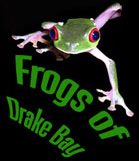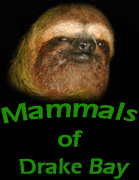|
Discover the
hidden treasures of Drake Bay, Costa Rica with Tracie "The Bug Lady"

Home

Tour
Basics

Meet the Bug
Lady

Tales from the
Edge

Media

Reservations

Links



Facts about Drake Bay, Costa Rica

Travel To Drake Bay

Drake Bay Area Map

Hotel Information

Tips for Travelers

Tours

Recommended
Reading




 |
|
Hemeroplanes sp
The rainforest of the
Osa Peninsula is truly a place of magic. Here, disappearing
acts, trickery, and the art of illusion are masterfully crafted
in the theater of life. Leaves may spring to life and walk
before your very eyes. Bark can suddenly burst into flight.
Twigs incredibly stride from tree to tree.
Our
guests
on The Night Tour often ask: “What is the most amazing encounter you‘ve ever had on
the night tour?“. Our answer is always the same: Without
question,
none is more spectacular than an encounter with Hemeroplanes, a species of
hawk moth caterpillar. Yes, a caterpillar.
A caterpillar may not seem so exciting
considering that we do, on occasion, encounter Pumas, Ocelots,
and even Tapirs on The Night Tour. The amazing transformation
undertaken by the Hemeroplanes caterpillar, though, truly
defies the imagination. |
|
|

We
have been lucky enough to encounter Hemeroplanes only a
handful of times.
Our first encounter happened on a cool, drizzly night during the
month of August. It was toward the end of the night and we were
headed towards town to drop off our guests. As we reached the suspension bridge which
crosses the Agujitas River, I spotted a large caterpillar
feeding on a plant about a meter off the trail.
We
were immediately stricken by it’s size. Having never
before seen this species, we bent down the leaf on which it was
feeding to better observe and photograph it. At first glance,
this large caterpillar was quite ordinary. |
|
|

As Tracie lowered the
caterpillar's branch and I snapped shots off with my camera,
we realized that the caterpillar was changing....becoming
something entirely different.
|
|

After
posing placidly for a few shots, the
caterpillar suddenly released the twig on which it was perched and hung
dangling by its rear set of legs. It began to pull the tip of
it's head inward, puffing out the front part of it's
body.
Gradually,
previously hidden shades of yellow, white and black lit up the
caterpillar‘s new “face“.
|
|

Then, what appeared to be eyes, nostrils and scales
slowly began to materialize.
It quickly dawned on us that this
caterpillar was transforming into snake right before our eyes!
|
|
|

In just a few seconds,
Hemeroplanes looked much more like an Eyelash Viper (Bothriechis
schelgelii) than it did a caterpillar.
Just when we thought it couldn’t
possibly get any weirder.....it did. The caterpillar began to
flail, as if trying to strike out at us!
We stood awestruck, watching this
performance, a rush of questions whirling through our minds. Was
this even possible?
|
|

Stunned by what we had just seen, we returned home and
immediately began our search to identify this incredible
caterpillar. We found a great source of information in 100
Caterpillars by Jeffrey C. Miller, Daniel H. Janzen, and
Winifred Hallwachs.
|
|
|
 Based
in Guanacaste and Penn State, Dan Janzen and Winifred Hallwachs
have been conducting ground breaking research on the moths of
Costa Rica, as well as many other topics, for over thirty years. Based
in Guanacaste and Penn State, Dan Janzen and Winifred Hallwachs
have been conducting ground breaking research on the moths of
Costa Rica, as well as many other topics, for over thirty years.
Janzen
was instrumental in saving, reforesting and preserving the Area
de Conservacion Guanacaste, a UNESCO World Heritage Site.
|
|

According to their incredible publication,
this caterpillar is quite rare to see. They describe two similar
species previously collected in Costa Rica: Hemeroplanes triptolemus occurs in the Dry
Forest while Hemeroplanes ornatus occurs in the
Rainforest.
According to Janzen as caterpillars
Hemeroplanes sp. feed on the leaves of
apocynaceous vines. Every time we have found them in Drake Bay
they have been feeding on Lacmellea panamensis, an
evergreen tree in the Apocynaceae family which occurs in
Nicaragua, Costa Rica, Panama, Colombia and Ecuador.
As an adult, Hemeroplanes is a fairly large sphinx moth. Although
beautiful in its own right, the adult moth leaves no hint of its spectacular previous
existence as a "snake caterpillar".

References:
Miller, J. Janzen, D. Hallwachs, W. 2006
100 Caterpillars The Belknap Press of Harvard
University Press
|
|
|
|
|
|



